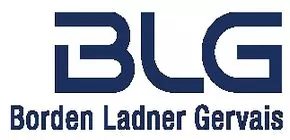- with Senior Company Executives, HR and Finance and Tax Executives
- in Canada
- with readers working within the Accounting & Consultancy, Banking & Credit and Insurance industries
The content of this article is intended to provide a general
guide to the subject matter. Specialist advice should be sought
about your specific circumstances.![]() and
Beverley Moore
and
Beverley Moore ![]()
Trademark Cases
FCA dismisses Appeal; Refuses to Strike Paragraphs from
Statement of Claim
Beyond the Rack Enterprises v. Michael Kors et
al.
The Federal Court of Appeal (FCA) upheld the decision of the trial
judge dismissing a motion brought by Beyond the Rack to strike
paragraphs from Michael Kors' Statement of Claim. The trial
decision can be found here and our summary of it can be found
here.
The FCA held that the trial judge had applied a de novo
standard of review and agreed with the Prothonotary's decision
not to strike the impugned paragraphs. Furthermore, the FCA upheld
the Judge's decision that there was no abuse of process in the
impugned paragraphs as they did not lack an evidential basis. The
FCA held that there was a heavy burden borne by a party seeking to
strike a claim prior to discovery. Thus the Appeal was
dismissed.
Decisions of the Commissioner of Patents
Commissioner of Patents Reverses Examiner's Refusal to
Allow Patent on Basis of Sound Prediction and Desired Result
Arguments
Decision 1303 Re: Application No.
592,567
The Application was rejected by the Examiner under section 2 of
the Patent Act for containing claims for which the utility could
not soundly be predicted and under section 34(2) for containing
claims directed to a desired result. The Commissioner held that the
rejection should be reversed.
The Commissioner considered the test for sound prediction and held
that there was both a factual basis and a sound line of reasoning
in this case and that they were found in the disclosure of the
patent. Thus, the Commissioner could not agree with the
Examiner's position that the claims did not comply with section
2 of the Patent Act. The Commissioner then went on to
consider a claim not objected to by the Examiner on this basis and
found that it could not be soundly predicted as it did not have the
promised utility across the entire scope. In considering that the
argument that the patent claimed a desired result, the Commissioner
held that the Examiner requiring the parameters to be "good
enough to give an infallible result" was setting the bar too
high. Routine uninventive experimentation is permitted. Thus, based
on the disclosure there were no grounds for finding that a person
of skill in the art would not be able to make the compositions
achieve the results. The patent was then sent to be considered
under section 43 of the Patent Act.
Application for Reissue Denied
Decision No. 1333 re: Patent
2,241,368
The Commissioner concurred with the findings of the Reissue Board
and held that the patent did not meet the requirements under
subsection 47(1) of the Patent Act as it was not
inoperative or defective. Furthermore, the Commissioner held that
the patentee failed to provide sufficient subjective evidence that
the proposed claims were intended to be part of the original
patent. Thus, no new patent was to be issued and the patent would
remain in its original granted form. The Commissioner held that
stating that the claims are defective for claiming less than the
patentee intended is an acceptable defect. However, the patentee
must explain how the error arose, which led to the original patent
being defective, or inoperative.
The Commissioner held that an application for reissue cannot be
amended other than to correct an obvious typographical error. If
the facts are incorrect, then the only remedy is to file a new
application, including any prescribed fees, within four years of
the issue date of the original patent. Furthermore, a patentee can
not obtain protection for claims with the same scope as those
deliberately cancelled during prosecution. The only evidence of
intent regarding the error of not including the newly sought
claims, was a US patent. However, those claims were introduced into
the US prosecution only after the Canadian issue date. Thus there
is no substantiation for the position that similar claims were
intended to be part of the original Canadian patent. In addition,
the Commissioner held that a failure to file a divisional
application is not a direct error or defect pertaining to the
original patent document. It is a second patent. Thus, it provides
no evidence as to the intent regarding the original patent. Section
47(3) does not provide a remedy to allow for a reissue to include
unfiled divisional claims without meeting the requirement of
section 47(1). Thus, the application for reissue was denied.
Other Industry News
Health Canada has published a Notice - New requirements for submitting
administrative drug submissions to Health Canada.
Health Canada has published a Notice - Publication of information about certain
Clinical Trial Applications authorized by Health Canada.
Health Canada has also published a Notice - Validation rules for regulatory
transactions submitted to Health Canada in the electronic Common
Technical Document (eCTD) format.
About BLG

